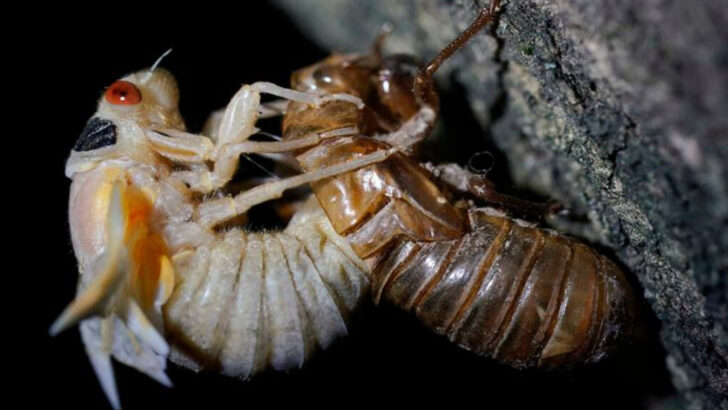Think you’ve got a handle on U.S. wildlife? Think again. The natural world here is full of surprises—some so bizarre they sound completely made up.
There are creatures with abilities that defy logic, survival tactics straight out of a sci-fi movie, and behaviors that make even the wildest myths seem tame. Just when you think you’ve seen it all, nature throws in a plot twist.
From the depths of the forests to the driest deserts, these animals are rewriting the rules of what’s possible. Some are masters of disguise, others have unexpected talents, and a few seem to break the very laws of nature.
Get ready to challenge everything you thought you knew—these 27 insane animal facts prove that U.S. wildlife is far stranger than fiction.
The Alaskan Moose
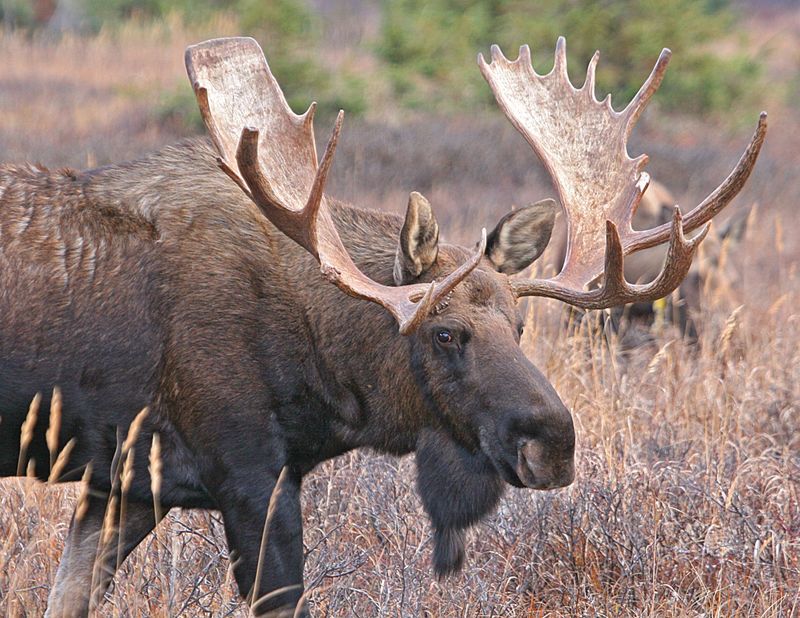
The Alaskan moose is a true giant of the forest, with males often weighing over 1,500 pounds. Their antlers alone can span up to six feet across, making them a sight to behold. These herbivores spend their days grazing on a wide variety of vegetation, including leaves, bark, and twigs.
In the harsh winter months, moose have adapted to survive on woody plants, which are abundant in their snowy habitats. Despite their size, moose are excellent swimmers, and can move through water with surprising agility. Their presence is a testament to the diverse ecosystems of the U.S.
American Alligator
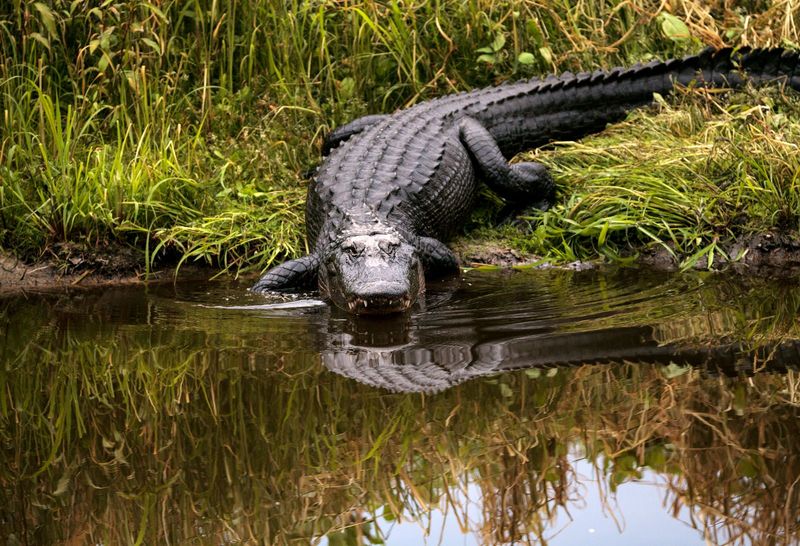
The American alligator is a formidable predator found in the swamps and marshes of the southeastern U.S. These reptiles can grow up to 15 feet in length and weigh over 1,000 pounds. Their powerful jaws are capable of crushing bones, making them top predators in their environment.
Alligators are not just fierce hunters; they also play a crucial role in their ecosystem by controlling prey populations and creating habitats for other wildlife. Despite their fearsome reputation, alligators are generally not aggressive towards humans if left undisturbed.
California Condor
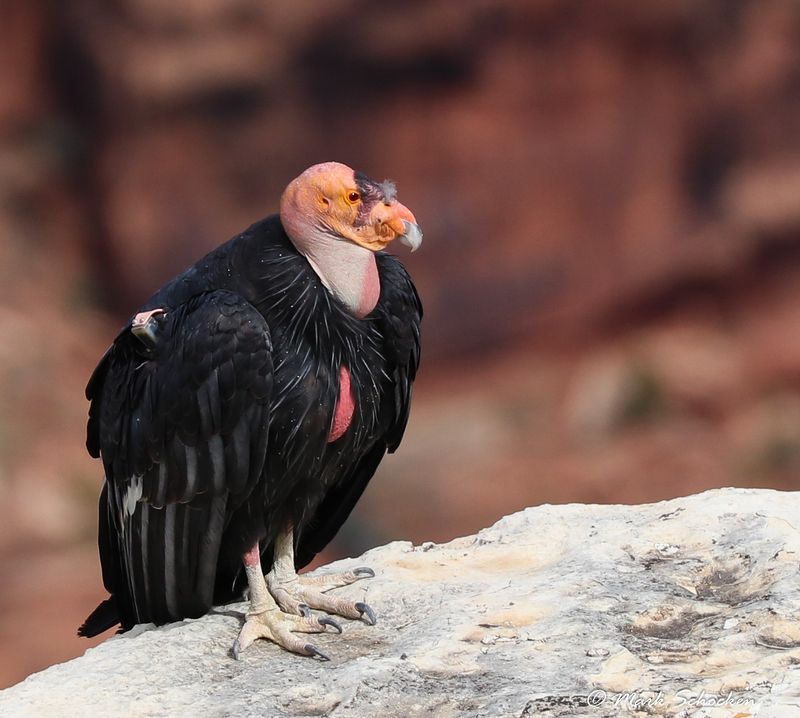
The California condor is an impressive bird, boasting the largest wingspan of any North American bird at nearly 10 feet. Once on the brink of extinction, conservation efforts have helped their numbers recover. These scavengers play a vital role in the ecosystem by cleaning up carcasses.
Condors are known for their distinctive bald heads and striking black and white plumage. Found soaring high above the Grand Canyon and other rugged terrains, they are a symbol of hope for wildlife conservation. Their survival story is a remarkable testament to human intervention.
Gila Monster
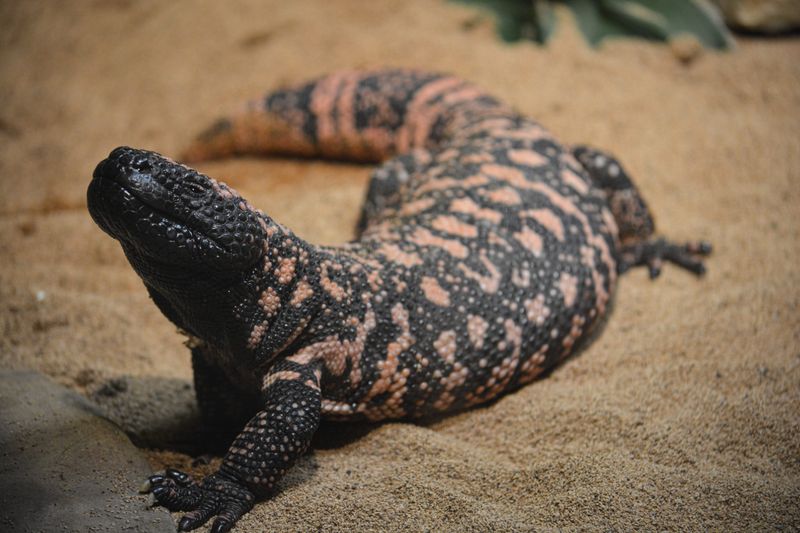
The Gila monster, native to the southwestern U.S., is one of the few venomous lizards in the world. Its venom is delivered through grooves in its teeth, although it poses little threat to humans. These lizards have a distinctive beaded appearance, with patterns of orange and black.
Gila monsters spend most of their time hidden underground, emerging to hunt small mammals and birds. Their slow metabolism allows them to go months without food. They are protected by state law, reflecting the importance of preserving such unique creatures within their desert ecosystem.
Prairie Dog Towns
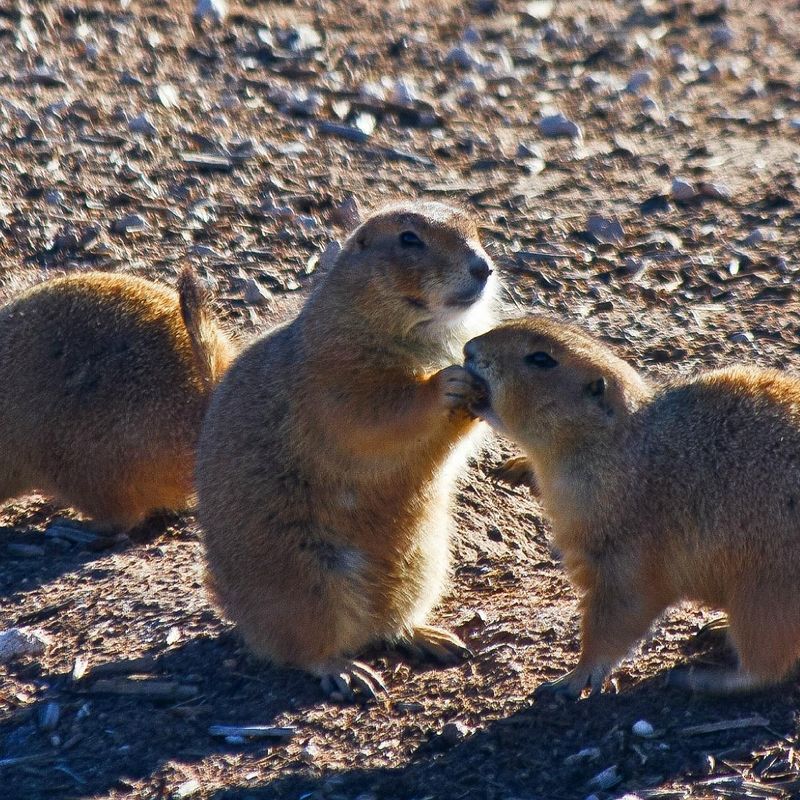
Prairie dogs are social creatures often found in large colonies across the Great Plains. These ‘towns’ can cover hundreds of acres, with intricate networks of burrows. Prairie dogs communicate through a complex system of vocalizations, warning each other of potential threats.
Their burrowing activities aerate the soil, promoting plant growth and providing habitats for other species. Despite their ecological benefits, prairie dogs often face threats from habitat destruction and disease. Conservation efforts are essential to ensure these dynamic communities continue to thrive in their native landscapes.
North American Beaver
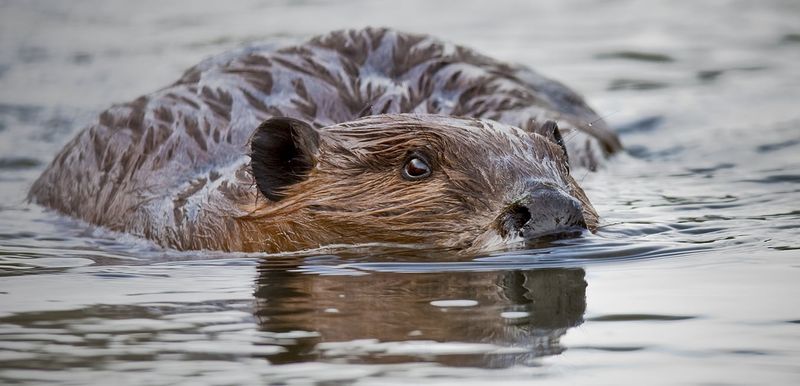
The North American beaver is a natural engineer, known for its ability to transform landscapes with its dam-building activities. Beavers use their strong teeth to fell trees and build intricate dams and lodges, creating wetlands beneficial to many species.
These industrious rodents play a crucial role in maintaining healthy ecosystems. Their dams help regulate water flow, reduce erosion, and create habitats for fish and other aquatic life. Beavers’ activities demonstrate the profound impact a single species can have on the environment, showcasing nature’s intricate balance.
Grizzly Bears of Yellowstone
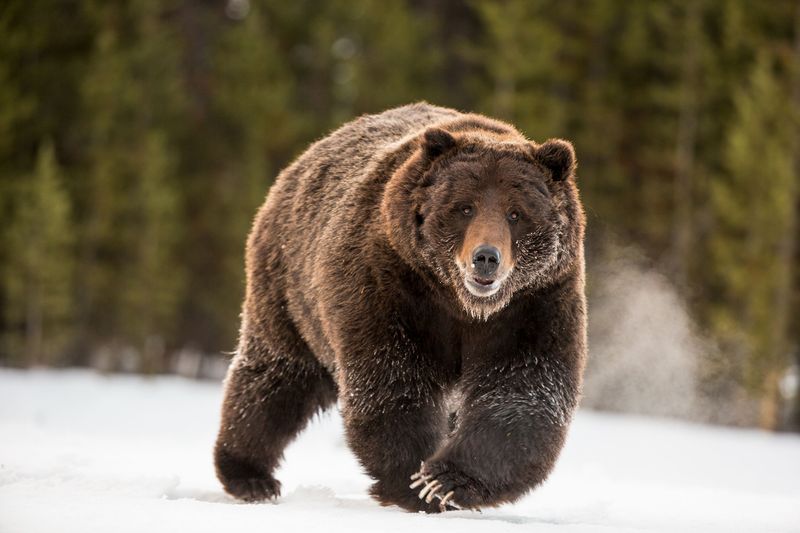
Grizzly bears are iconic inhabitants of Yellowstone National Park, drawing visitors from all over the world. These massive creatures can weigh up to 800 pounds and are known for their distinctive hump and long claws.
Grizzly bears have a varied diet, ranging from berries and roots to fish and small mammals. Their presence is vital for the park’s ecosystem, as they help control prey populations and aid in seed dispersal. Observing these magnificent animals in their natural habitat offers a unique glimpse into the wild heart of America.
Monarch Butterfly Migration
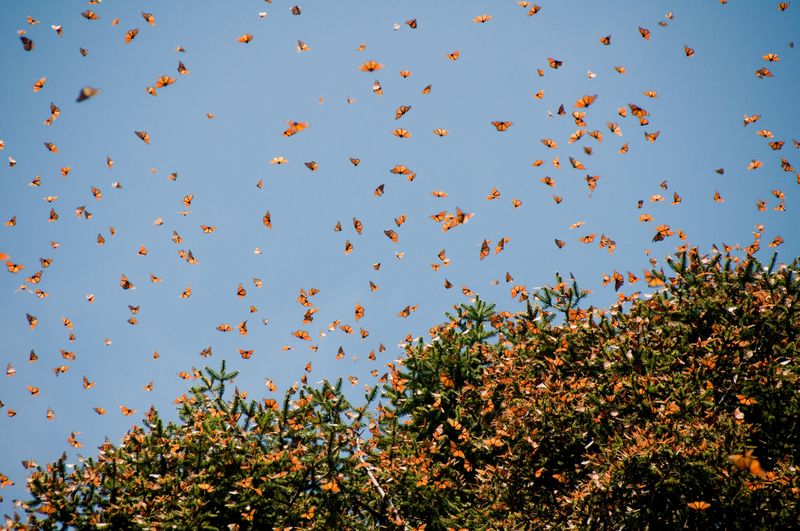
The monarch butterfly’s migration is one of the most astonishing natural events in North America. Each fall, millions of these butterflies travel thousands of miles from the northern U.S. and Canada to central Mexico. This incredible journey spans generations, as no single butterfly completes the entire round trip.
Monarchs rely on environmental cues to navigate, such as the position of the sun and Earth’s magnetic field. Their migration supports various ecosystems by pollinating flowers along the way. Conservation efforts focus on preserving their habitats, including the milkweed plant essential for their lifecycle.
Great Horned Owl
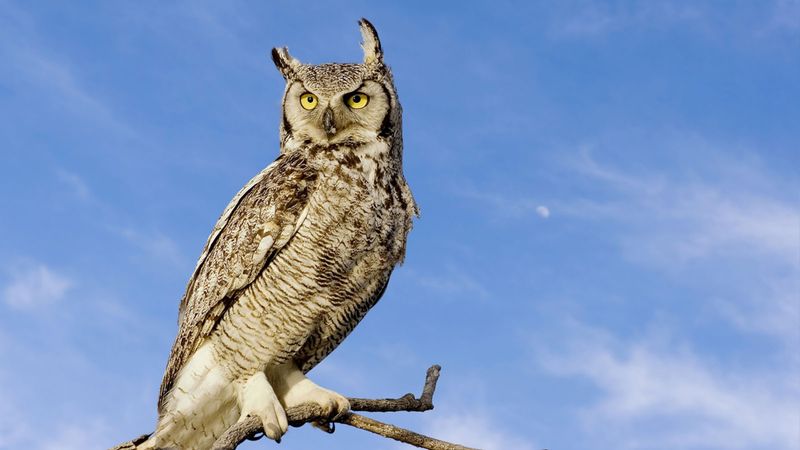
The great horned owl is a formidable nocturnal predator found across the U.S. Known for their piercing yellow eyes and distinctive tufts, these owls are masters of stealth. They can rotate their heads nearly 270 degrees and fly silently, making them effective hunters.
Great horned owls have a varied diet, including rodents, birds, and even skunks. Their adaptability allows them to thrive in diverse habitats, from forests to deserts. As top predators, they play a crucial role in controlling prey populations, highlighting the intricate balance of nature.
Manatees of Florida
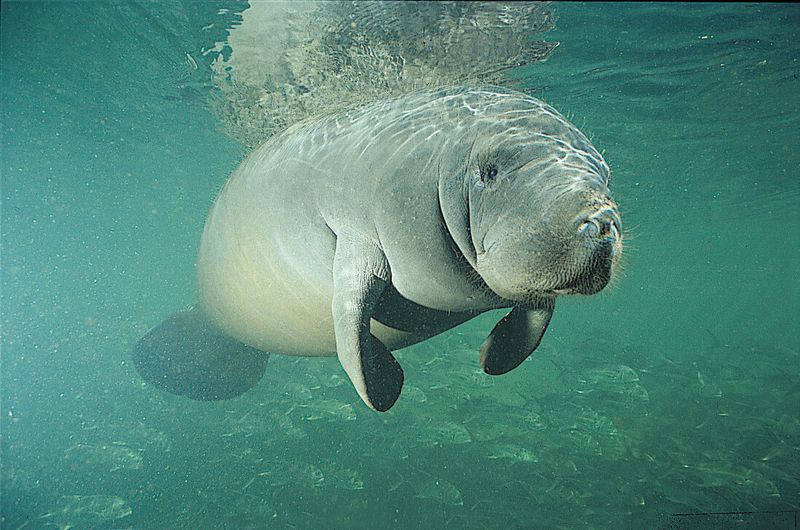
Manatees, often called sea cows, are gentle giants found in Florida’s warm coastal waters and freshwater springs. These herbivorous mammals can grow over 13 feet long and weigh up to 1,300 pounds. Despite their size, manatees are graceful swimmers and are closely related to elephants.
Manatees feed primarily on seagrasses and aquatic plants, contributing to the health of their ecosystems. They face threats from habitat loss and boat strikes, making conservation efforts crucial. Observing manatees in their natural environment offers a peaceful glimpse into the wonders of marine life.
Blue Jay Intelligence
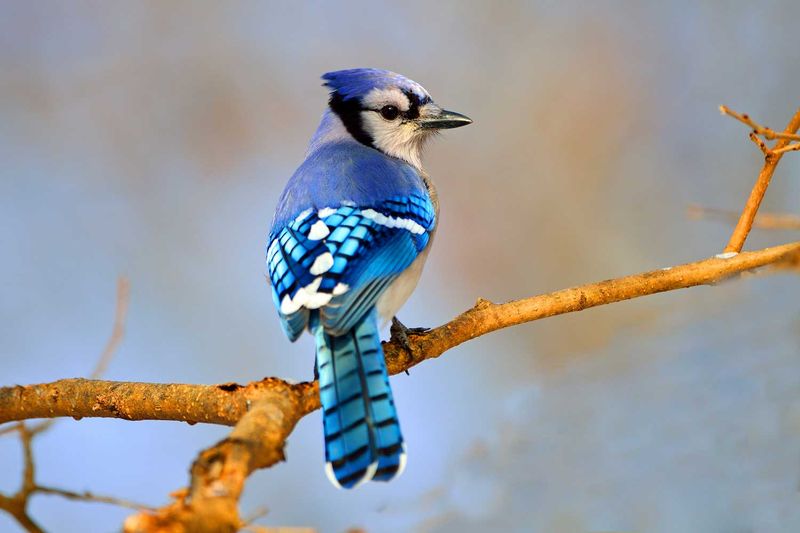
Blue jays are intelligent and social birds known for their vibrant blue plumage and striking crests. Found throughout the eastern U.S., these birds are highly vocal and have complex social structures. Blue jays are capable of mimicking the calls of other birds, including hawks, to deceive predators and other jays.
Their intelligence is further demonstrated by their problem-solving abilities and resourcefulness in finding food. Blue jays play a role in forest regeneration by spreading seeds, particularly acorns, which they cache for later consumption. Their presence adds color and liveliness to any landscape.
American Bison
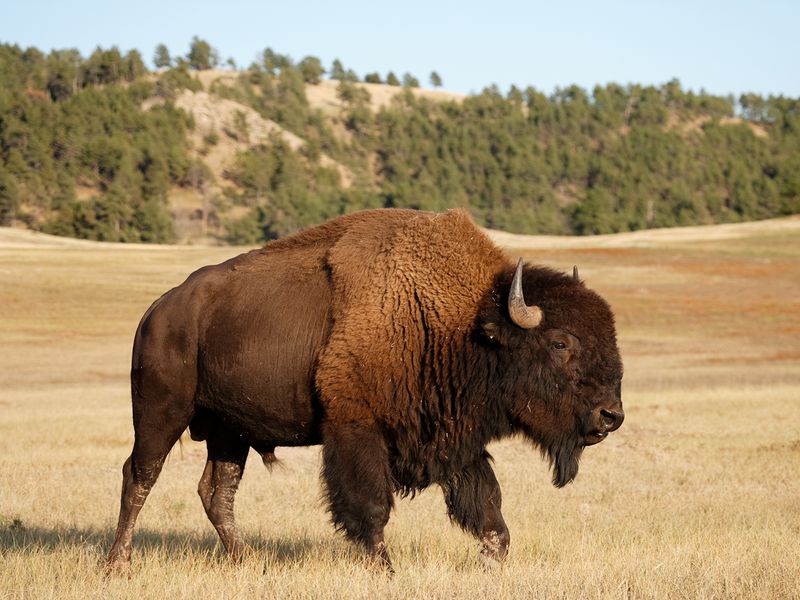
American bison are iconic symbols of the Great Plains, representing strength and resilience. Once numbering in the millions, their populations were decimated by hunting and habitat loss. Today, conservation efforts have helped restore bison to protected areas.
These massive herbivores can weigh over 2,000 pounds and have distinctive shoulder humps and shaggy manes. Bison play a key role in their ecosystems by grazing on grasses, promoting plant diversity and soil health. Observing a bison herd roaming the plains is a powerful reminder of the natural heritage of the U.S.
Coyote Adaptability
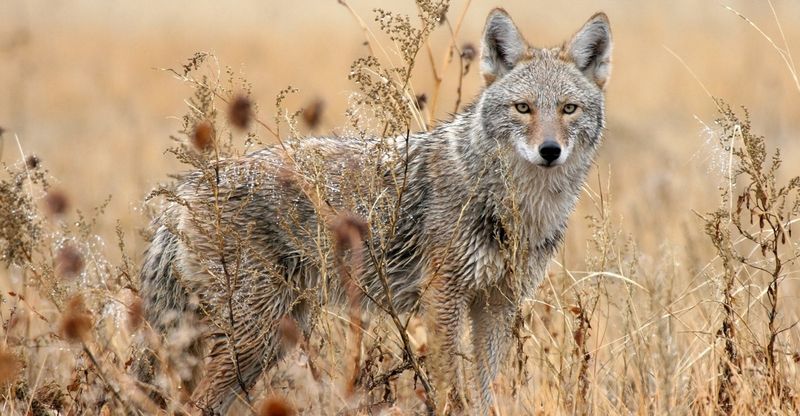
Coyotes are incredibly adaptable canids found throughout North America, thriving in a variety of environments from deserts to urban areas. These intelligent animals are known for their keen senses and cunning behavior, which enable them to hunt a diverse range of prey.
Coyotes communicate with a distinctive series of yips and howls, often heard echoing at dusk. Their adaptability has allowed them to expand their range significantly, even as other predators have declined. Coyotes’ presence in urban areas highlights the ongoing interaction between wildlife and human development.
Bald Eagle’s Comeback
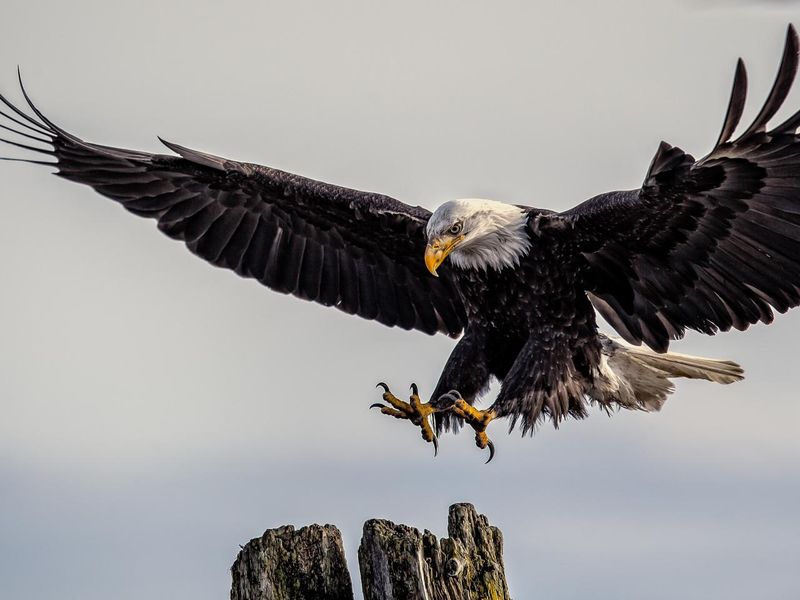
The bald eagle is an emblem of American strength and freedom, once teetering on the brink of extinction. Through protective measures and banning harmful pesticides, these magnificent birds have made a remarkable recovery. Bald eagles can now be seen across most of the U.S., often near large bodies of open water.
With a wingspan of up to 8 feet, bald eagles are formidable hunters, primarily feeding on fish. Their nests, called eyries, are among the largest of any bird, sometimes weighing over a ton. The eagle’s resurgence is a testament to effective conservation efforts.
Raccoons’ Urban Lifestyle
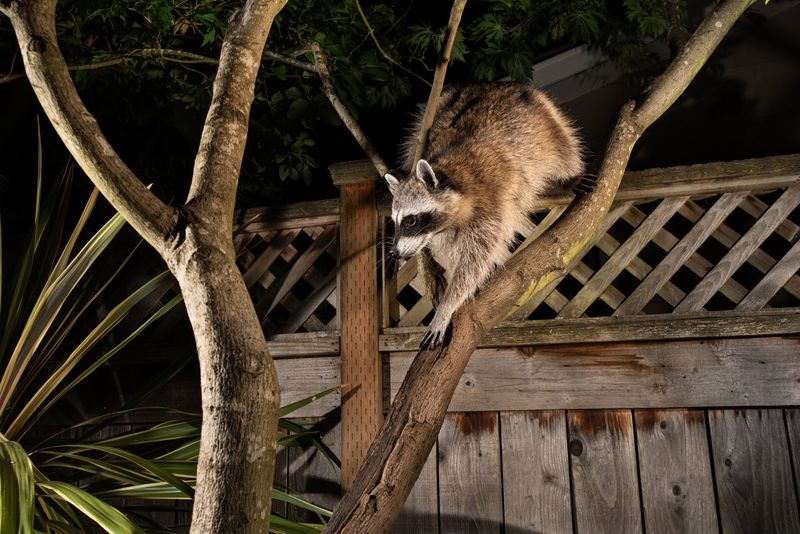
Raccoons have become notorious urban dwellers, adapting their lifestyle to thrive in cities across the U.S. Known for their dexterous front paws and masked faces, these nocturnal animals are expert foragers, often raiding trash cans for food.
Raccoons are highly intelligent and resourceful, capable of opening containers and solving puzzles to access food. Their adaptability has allowed them to thrive despite urban expansion. While they may be a nuisance to some, raccoons play a role in controlling insect and rodent populations, contributing to urban ecosystems.
Sea Otters’ Tool Use
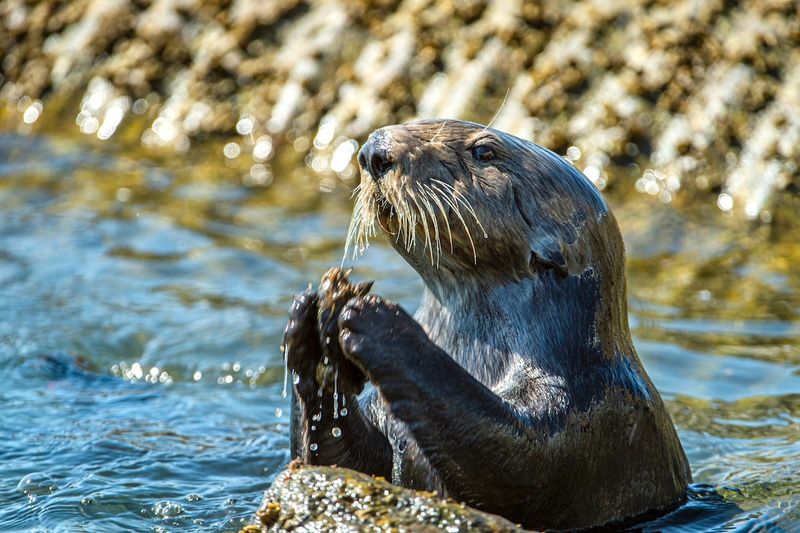
Sea otters are charming marine mammals known for their playful behavior and use of tools. Found along the Pacific coast, these otters use rocks to crack open shellfish, showcasing their intelligence and dexterity. This behavior is one of the few examples of tool use among non-human animals.
Sea otters play a critical role in maintaining the health of kelp forest ecosystems by controlling sea urchin populations, which can otherwise decimate kelp beds. Their thick fur, the densest in the animal kingdom, keeps them warm in cold waters, highlighting their unique adaptations.
Elk Rutting Season
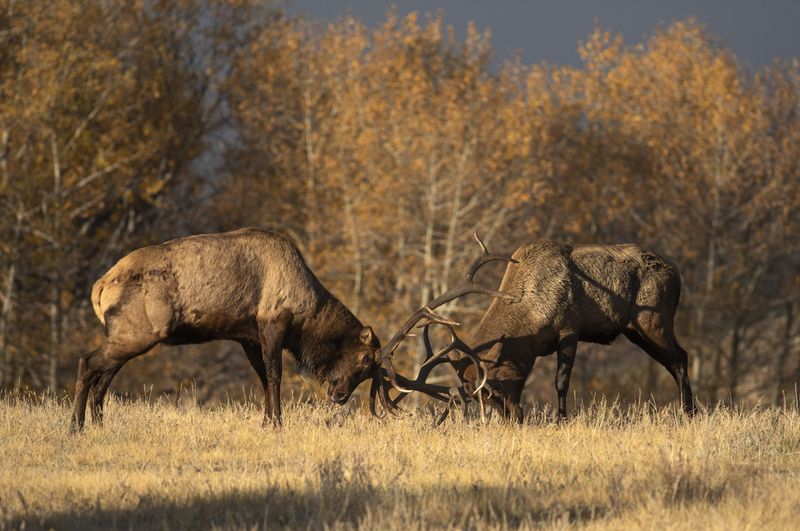
Elk are known for their dramatic rutting season, which occurs each fall when bulls compete for the attention of females. This spectacle involves loud bugling calls, displays of antlers, and occasionally physical confrontations. These behaviors establish dominance and attract females, ensuring the continuation of the species.
Elk are found in various habitats across the western U.S., from forests to grasslands. Their presence is vital for maintaining healthy ecosystems, as they influence plant communities and provide prey for predators. Observing elk during rutting season offers a glimpse into the natural world’s raw power.
Armadillo’s Armor
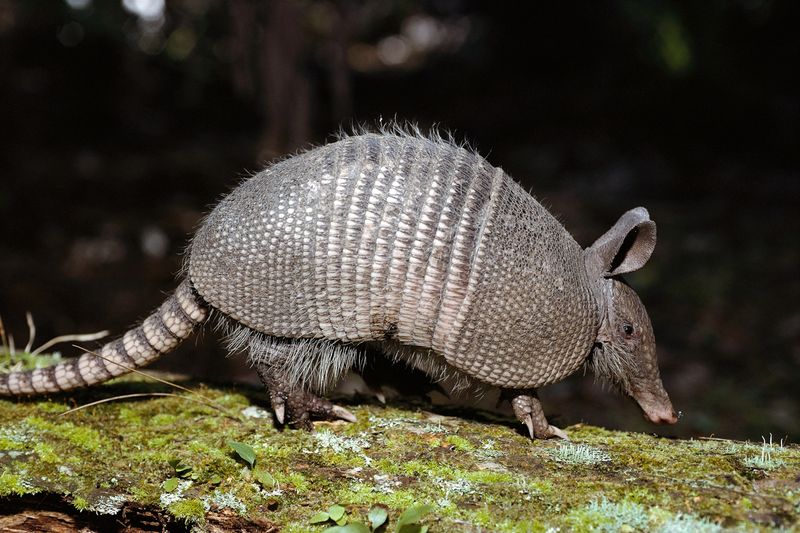
The nine-banded armadillo, with its distinctive armored shell, is often seen crossing roads in the southern U.S. This unique mammal can curl into a ball to protect itself from predators, a feature that makes it truly remarkable.
Armadillos are primarily insectivores, using their sharp claws to dig for ants and termites. They are also known for their ability to hold their breath underwater for up to six minutes, allowing them to cross streams with ease. Armadillos’ intriguing adaptations make them a fascinating subject of study for biologists and wildlife enthusiasts.
Peregrine Falcon’s Speed
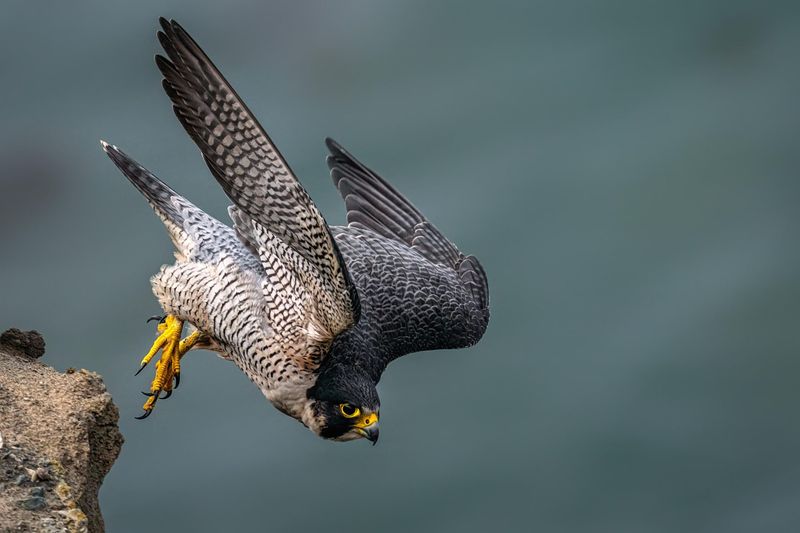
Peregrine falcons are renowned for their incredible speed and agility, making them formidable predators. These birds of prey can be found across the U.S., often inhabiting cliffs and skyscrapers alike. During a hunting dive, or stoop, peregrines can reach speeds over 240 mph, making them the fastest animals on the planet.
Their keen eyesight allows them to spot prey from great distances, and their powerful talons ensure a swift capture. Peregrine falcons’ ability to thrive in urban environments highlights their adaptability and the resilience of wildlife in the face of human development.
Red Fox Adaptations
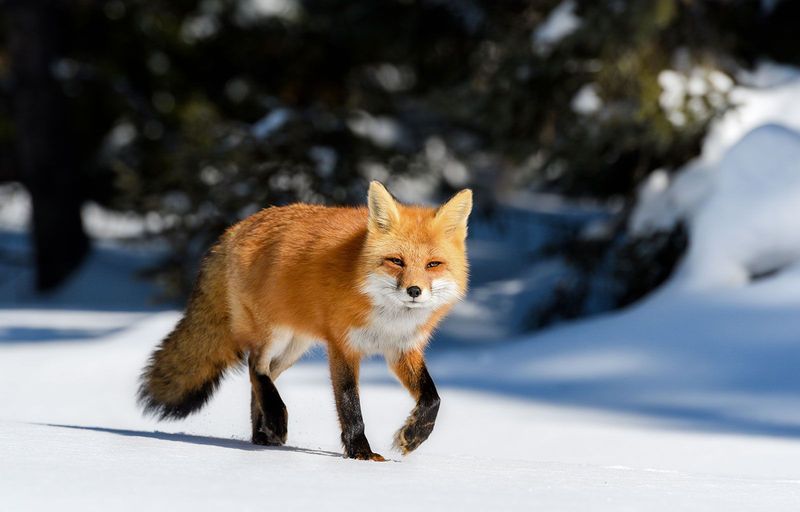
The red fox is a cunning survivor found in various habitats across the U.S., from forests to urban areas. Known for their striking red coats and bushy tails, red foxes are skilled hunters with sharp senses of hearing and smell.
These adaptable animals have a diverse diet, including rodents, birds, and fruits, allowing them to thrive in many environments. Red foxes are also solitary hunters, relying on stealth and agility to catch their prey. Their ability to coexist with humans highlights the dynamic balance between wildlife and urban development.
Cicada Emergence
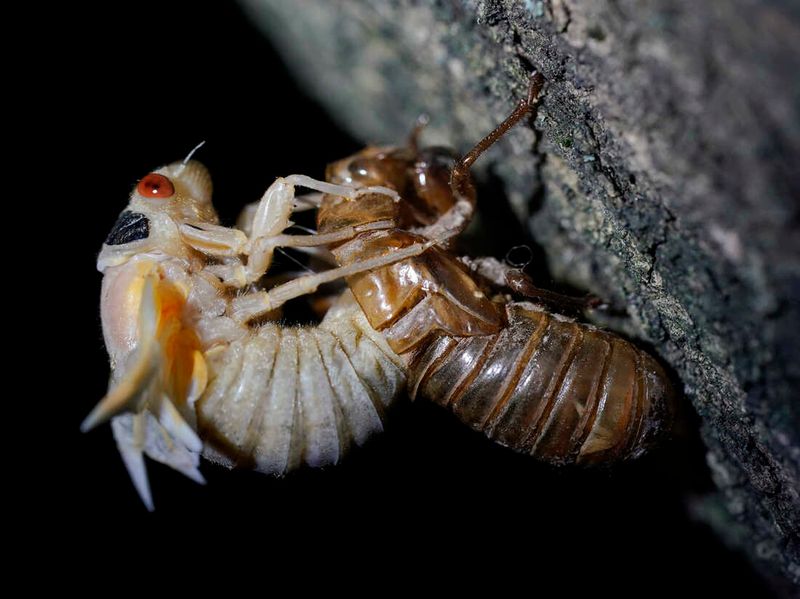
Cicadas are fascinating insects known for their unique life cycles and loud mating calls. In the U.S., periodic cicadas emerge every 13 or 17 years, creating a spectacular natural event. These synchronized emergences involve millions of cicadas bursting forth from the ground, filling the air with their distinctive songs.
Cicadas spend most of their lives underground as nymphs, feeding on plant roots before emerging as adults. Their mass emergence provides a feast for predators, creating a temporary abundance of food in their ecosystems. Cicadas’ life cycles showcase the intricate rhythms of nature.
Spotted Skunk’s Dance
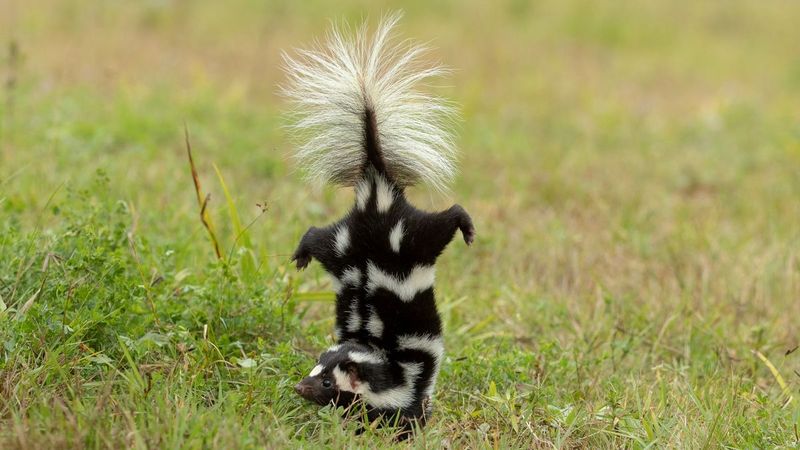
The spotted skunk is a small, agile mammal known for its distinctive black and white patterns and unique defensive behavior. When threatened, spotted skunks perform a handstand dance, raising their tails and stamping their feet as a warning before spraying.
This intriguing behavior not only deters predators but also serves as a display of agility and balance. Found across various habitats in the U.S., spotted skunks are primarily insectivores, helping control insect populations. Their captivating dance is a reminder of the diverse and often surprising ways wildlife adapts to survive.
American Bullfrog’s Call
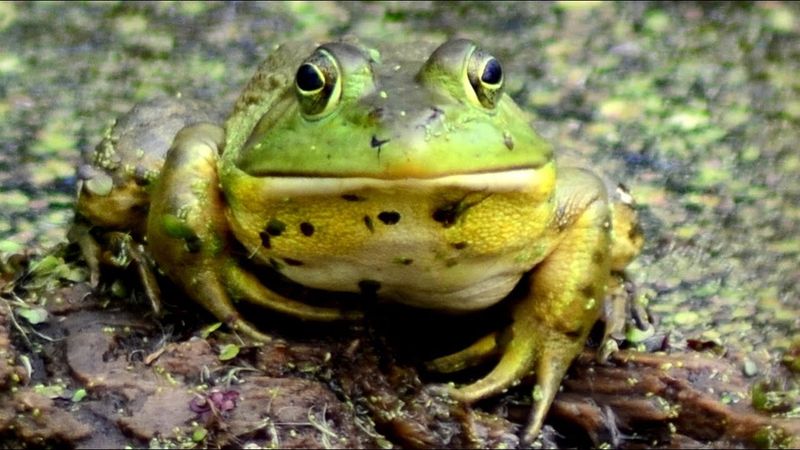
The American bullfrog is a common amphibian found throughout the U.S., known for its deep, resonant calls. These frogs are the largest in North America, with males producing loud, distinctive croaks to attract females during the breeding season.
Bullfrogs have a voracious appetite, feeding on insects, small mammals, and even other frogs. Their presence in aquatic ecosystems helps control insect populations, contributing to ecological balance. The bullfrog’s booming call is a familiar sound in wetlands, embodying the rich biodiversity of these vital habitats.
Roadrunner’s Speed
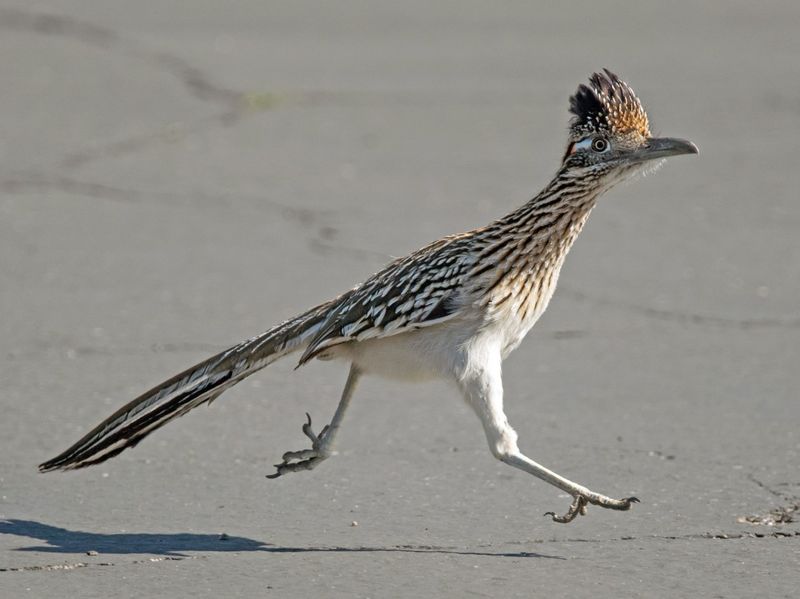
The roadrunner is a speedy bird found in the southwestern U.S., famous for its ability to run at speeds up to 20 mph. These birds are well-adapted to desert life, using their strong legs to chase down prey, including insects, lizards, and small snakes.
Roadrunners are also known for their distinctive appearance, with long legs, tails, and crests. Their unique adaptations allow them to survive in harsh environments where temperatures can vary dramatically. The roadrunner’s speed and agility make it an iconic symbol of the desert’s resilience and vitality.
Eastern Box Turtle
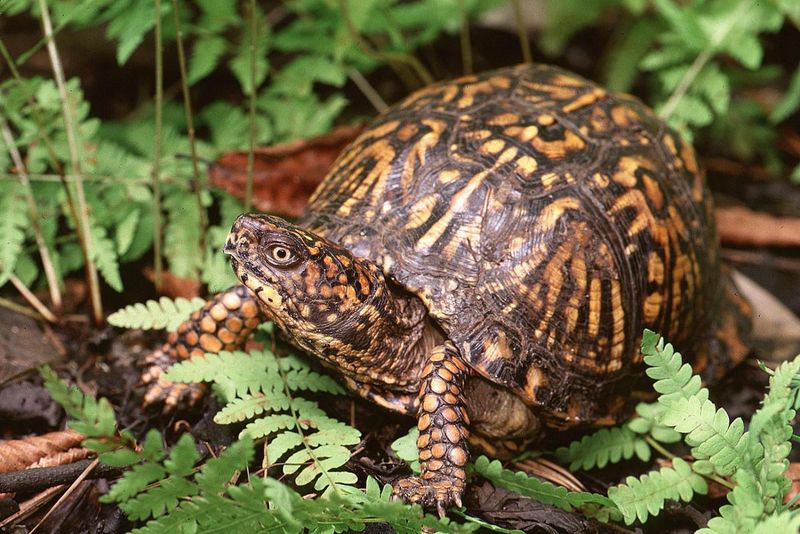
The Eastern box turtle is a beloved reptile found in woodlands and meadows across the eastern U.S. Known for their domed shells and colorful patterns, these turtles can live for decades, with some reaching over 100 years old.
Box turtles are omnivores, feeding on a mix of plants and small animals. Their ability to retract completely into their shells offers protection from predators. Habitat loss poses a significant threat to box turtles, making conservation efforts important for their survival. Their slow, steady presence is a testament to the enduring beauty of the natural world.
Sandhill Crane Migration
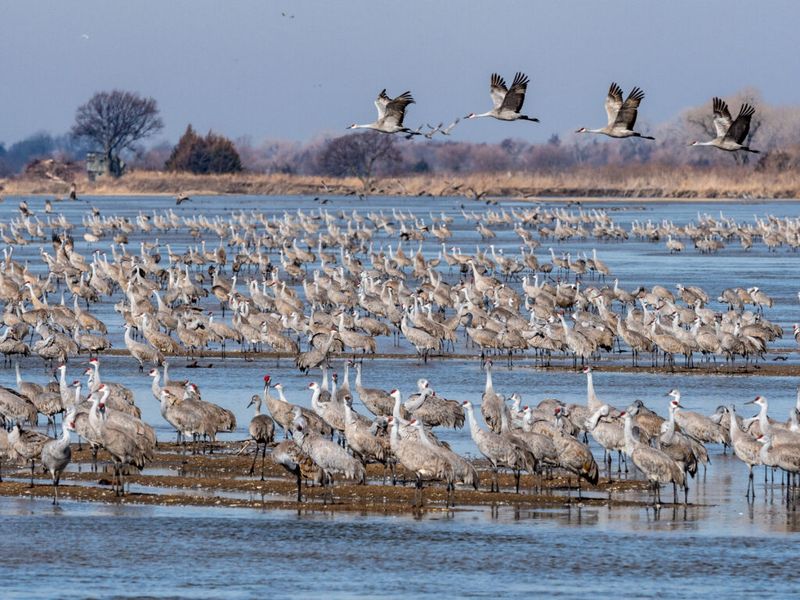
Sandhill cranes are magnificent birds known for their long migrations and distinctive calls. Every year, these cranes travel thousands of miles from their breeding grounds in the northern U.S. and Canada to wintering areas in the southern U.S. and Mexico.
Their migrations are marked by loud, rolling calls and graceful V-shaped flight patterns. Sandhill cranes’ presence in wetlands and grasslands plays a crucial role in maintaining these ecosystems. Observing their migration is a breathtaking experience, showcasing the incredible endurance and navigational skills of these majestic birds.
The Stilt-Legged Flamingo of the Great Salt Lake
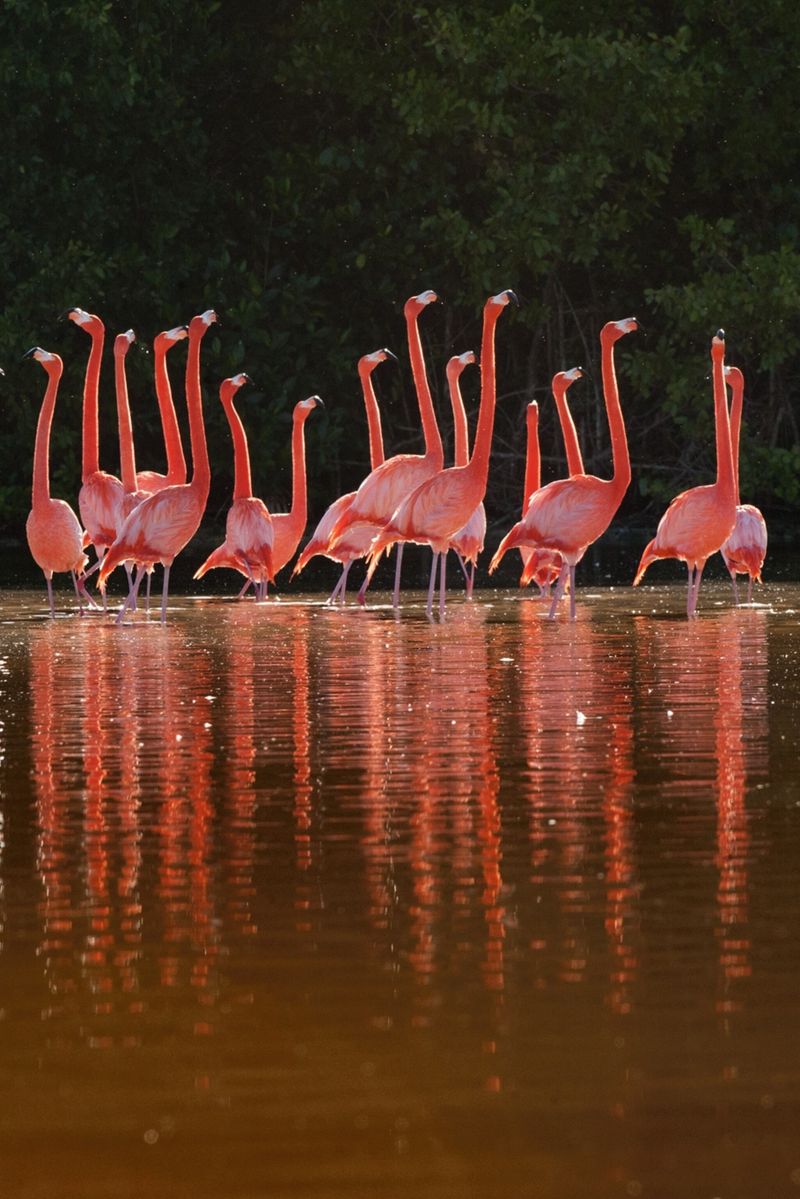
In the surreal landscape of the Great Salt Lake, resides the stilt-legged flamingo. Known for its strikingly elongated legs, this bird seems to defy nature’s norms. Its legs, almost twice the length of typical flamingos, allow it to wade through deeper waters in search of shrimp and algae.
Legend has it that these flamingos dance under the moonlight, creating a mesmerizing spectacle. Observers claim their legs appear to stretch even further as they gracefully move through the water.
Whether myth or reality, these flamingos are a testament to the bizarre beauty of U.S. wildlife.

